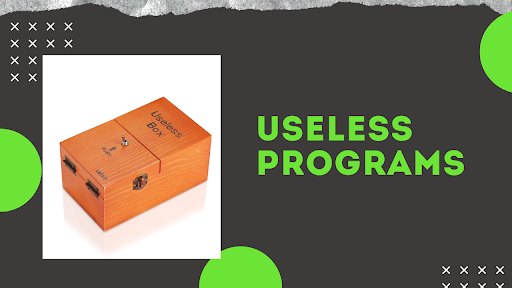What are useless programs?

Hacker News has some of most amusing topics and discussions on the topics; one of the conversations is about useless programs. Some applications are created just for amusement and fun; not all applications that developers build have to solve real-life problems. These applications or programs are called “useless” programs and are just for creativity and entertainment. Despite their name, these programs aren’t truly useless—they serve purposes in entertainment, skill-building, and even pushing the boundaries of creativity.
This blog is written by Akshat Virmani at KushoAI. We're building the fastest way to test your APIs. It's completely free and you can sign up here.
What Are "Useless" Programs?
These programs are often built with humor in mind or as a personal challenge to explore coding creativity. They often require great coding skills and logical thinking, making them highly educational and creative.
These programs can range from games without purpose to artistic code that creates random patterns or outputs. Some widely used concepts, such as recursion or event-driven programming, are the result of useless programs from way back.
Useless program can help in:
Learning Environments: These programs are great for beginners because they allow them to try concepts in a fun way, making learning less intimidating.
Testing Edge Cases: Certain "useless" programs can help identify odd cases in programming languages or frameworks. For example, testing unusual syntax can reveal strange behavior worth knowing.
Prototype Exploration: "Useless" programs are sometimes prototypes for bigger ideas. Some fun applications can someday become businesses.
Team Culture and Bonding: Shared in developer forums, these projects encourage collaboration and humor, helping team members bond over their shared love of quirky code.
Why Do Developers Make Useless Programs?
- Skill Development: Building a project for fun allows developers to experiment with new programming languages, libraries, or frameworks without having a solid purpose.
- Creativity: Useless programs can reflect the creator’s imagination and originality for making fun applications for people to enjoy and take inspiration from.
- Community and Sharing: Developers share these projects on platforms like GitHub, Reddit, or Hacker News, sparking discussions and inspiring others to build their quirky creations.Examples of "Useless" Programs
The Useless Box, originally a physical gadget, had a single switch—when you turned it on, a little lever popped out of the box and turned it off. This simple concept has been adapted into code, with virtual boxes on screens that automatically shut themselves off when activated.
2. Infinite Cat Loop
A developer once created a program in which a cat image appears on the screen, watching another image of a cat, which watches another cat, and so on, in a never-ending loop. It can be a fun and silly way to learn about recursion, infinite loops, and how to manage system resources since an infinite loop that overloads memory can crash the program or even the device.
3. Neal.fun
A fun game Infinite Craft could fit into the category of “useless” program. It takes development to a whole new level. Such programs can be highly entertaining, allow developers to test concepts like infinite loops or procedural generation, and offer a playful, low-stakes environment for experimentation.
To Conclude
Coding doesn't have to serve a big purpose every time; sometimes, they are just there to entertain and to learn something new in a fun way. Useless programs show that programming is more than creating products or solving problems; it’s also about exploring, learning, and having fun.
This blog is written by Akshat Virmani at KushoAI. We're building an AI agent that tests your APIs for you. Bring in API information and watch KushoAI turn it into fully functional and exhaustive test suites in minutes.

Member discussion